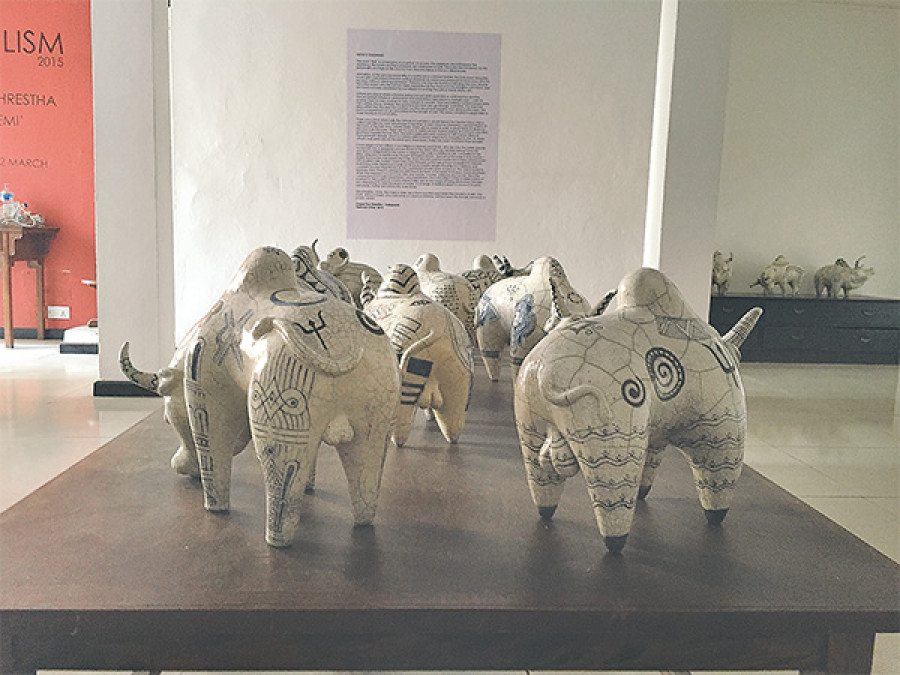Entertainment
Kalapremi: Portrait of an Artist and Art Lover
If you walk into the Siddhartha Art Gallery these days to view the show titled Masculism- by Gopal Das Shrestha - Kalapremi— you may not even notice the tall, slim, quiet man
Sophia Pande
Masculism, the exhibition of ceramic works by Shrestha, has already been covered, very well I might add, by the Post’s Nhooja Tuladhar last week, so I will not go into too much description here. I would prefer instead to talk about my own conversations with the artist over the last week as I went to view
the show a few hours before it opened, full of anticipation; I was not to be disappointed.
My first contact with Shrestha came during the second Kathmandu International Art Festival (KIAF) in 2012, when the artist was executing another stunning series of ceramic works titled Pakdai, Bikdai Manchhe (People Being Cooked and Sold), which consisted of a group of standing figures, each one very idiosyncratic in its own way.
In order to underscore the message behind the title, which is a commentary on human existence in modern times when everyone is fair game, as people are being ‘sold’ on many different levels, sometimes as soon as they come into this world, Shrestha was firing the collection of ceramic figures out in the open in Bhrikutimandap as they became ready, aided by some of his students and an enormous, fiery kiln that he had built himself.
Fascinated by the obvious skill and discipline involved in such an undertaking, many of us who were witness to that extraordinary event have been awaiting Shrestha’s next venture. Now that it is on show for everyone to see, along with a deeply thoughtful artist’s statement, which outlines the inception for the show, I was curious to speak with the man himself, to make contact with a clearly very sophisticated artist who might choose to impart more than just the rote words that some people maintain when probed about their artistic endeavours.
Again, I was not disappointed. “Kalapremi” means a lover of the arts, and this is truly what Shrestha is, both as a creator himself and as a collector both of art objects and of ideas that feed his ever-curious mind. When one speaks to this man, he is able to reach deep into his memory, his tangible experiences, as well as his vast readings, to express his thoughts ever so cogently in a beautifully spoken Nepali that makes you want to rush back to your literature books
and maybe even re-learn the basic Sanskrit that
you never appreciated back in the day.
As with every great artist, Shrestha is able to talk about each and every one of his artistic decisions leading up to the complete vision that encompasses you as you walk into his currently displayed show. The 20 ceramic bulls that are the highlight of the exhibition (at least in my mind), are made out of clay and glazed in an extremely difficult style perfected by the Japanese, called “Raku”.
Shrestha taught himself the glaze technique after having been interested in it for years, and having finally seen it done, just the one time in a workshop he once attended. Twelve years after he had seen the glaze being done for the first time, and with each bull requiring a full cylinder of gas in order to be properly fired, we have a show that rings with the authenticity of the maker himself, a man who used to paint houses and do the electrical wiring to feed himself and his family in his youth, but today is revered by both his students and his colleagues as a true artist, a gentleman whose love for the arts made him an exceptional artist himself.




 17.12°C Kathmandu
17.12°C Kathmandu










